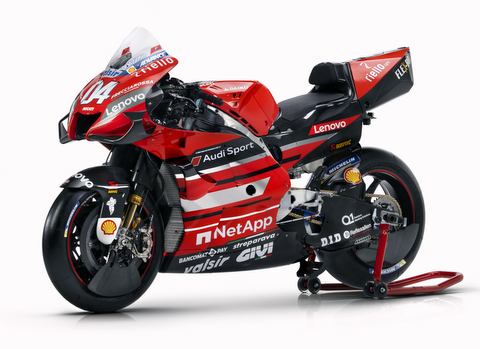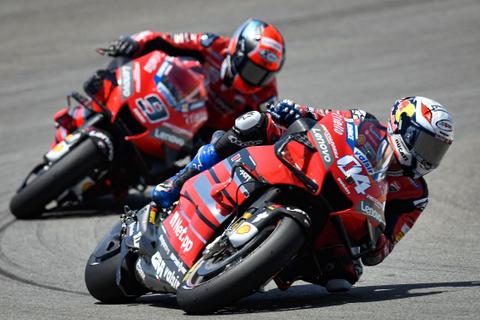Ducati and Altair Form a Technical Partnership
When a company spends 10 percent of its revenue and has a tenth of its employees working in one division, it’s fair to say that’s an important focus of the corporation. For Ducati that decimate of company is Ducati Corse, its racing division. The commitment of the company makes it clear that “win on Sunday, sell on Monday” is an active philosophy in Bologna.

Modern motorcycle racing, like much of motorsports, has evolved into a sophisticated technology platform. Last month that led to the announcement of a multi-year technical partnership between Ducati and Altair, a technology company known for high-performance computing and data analytics.
A Deeper Relationship

To be fair, the partnership is more of a formalization and expansion of a relationship that Altair and Ducati have developed in recent years. While Altair’s computer-aided software had been used in design and simulation, the new agreement will more deeply embed the tech company in areas of aerodynamics, fluid dynamics, weight optimization, structural optimization, vehicle dynamics and advanced powertrain technology.
The man at the nexus of Altair and Ducati is the managing director of Altair Italy, Andrea Benedetto. The good news for both companies is he’s a “two-wheel guy” with extensive engineering and product development experience. He sees his mission as “sitting together with his customer regularly, working to solve problems.” Benedetto told Clean Fleet Report that he expected to “not necessarily have all the answers.”
In addition, Benedetto said Altair’s approach was not simply to attempt to apply its software tools to a given problem, but “start with the customer’s problem.” As an engineer, he sees this as essentially seeing issues from the customer’s point of view.
A Fertile Problem Ground
Motorcycle racing, particularly at the level at which Ducati competes (the MotoGP and Superbike series) presents an abundance of “challenges” on a regular basis. The high-speed, knee-scraping MotoGP races are known for stressing bikes and riders with their tight courses and extremely competitive lineups.

“What was simple 10 years ago, is now part of a revolution with technology quickly taking a more prominent role,” Benedetto said. The more sophisticated dynamics of vehicle control and powertrain combustion lead him to his favorite word that describes Altair’s goal with Ducati—optimization. The process is to define the problem, simulate various solutions and search to optimize the best one.
One of the tool’s Altair brings to the motorcycle world is computational fluid dynamics (CFD). As an example, Benedetto said CFD has been applied to engine cooling, heat management and lubrication. Benedetto said CFD could simulate a single particle of oil flowing through the engine’s crankshaft. Improving fluid flows, cooling and heat management can lead to a better running engine that can provide that critical millisecond of added performance that can lead to victory on the track.
Working with the Ducati team for the past seven years has given Altair’s team (which Benedetto said was a “flexible matrix” of experts brought in to attack specific issues identified on the track, in testing or through Ducati’s own simulation exercises.
Story by Michael Coates; photos from the manufacturers
Make sure to opt-in to the Clean Fleet Report newsletter (top right of page) to be notified of all new stories and vehicle reviews.
Related Stories You Might Enjoy—Two-Wheel Electrification
News: The 2029 By Fuller Moto
News: 2020 Energica EVA Ribelle Electric Motorcycle
First Ride: 2020 Harley-Davidson LiveWire
Two-Wheel Touring: The Clean Way Up
15 Reasons To Choose a Motorcycle Over a Car
Electric Motorcycles: Your Other EV
